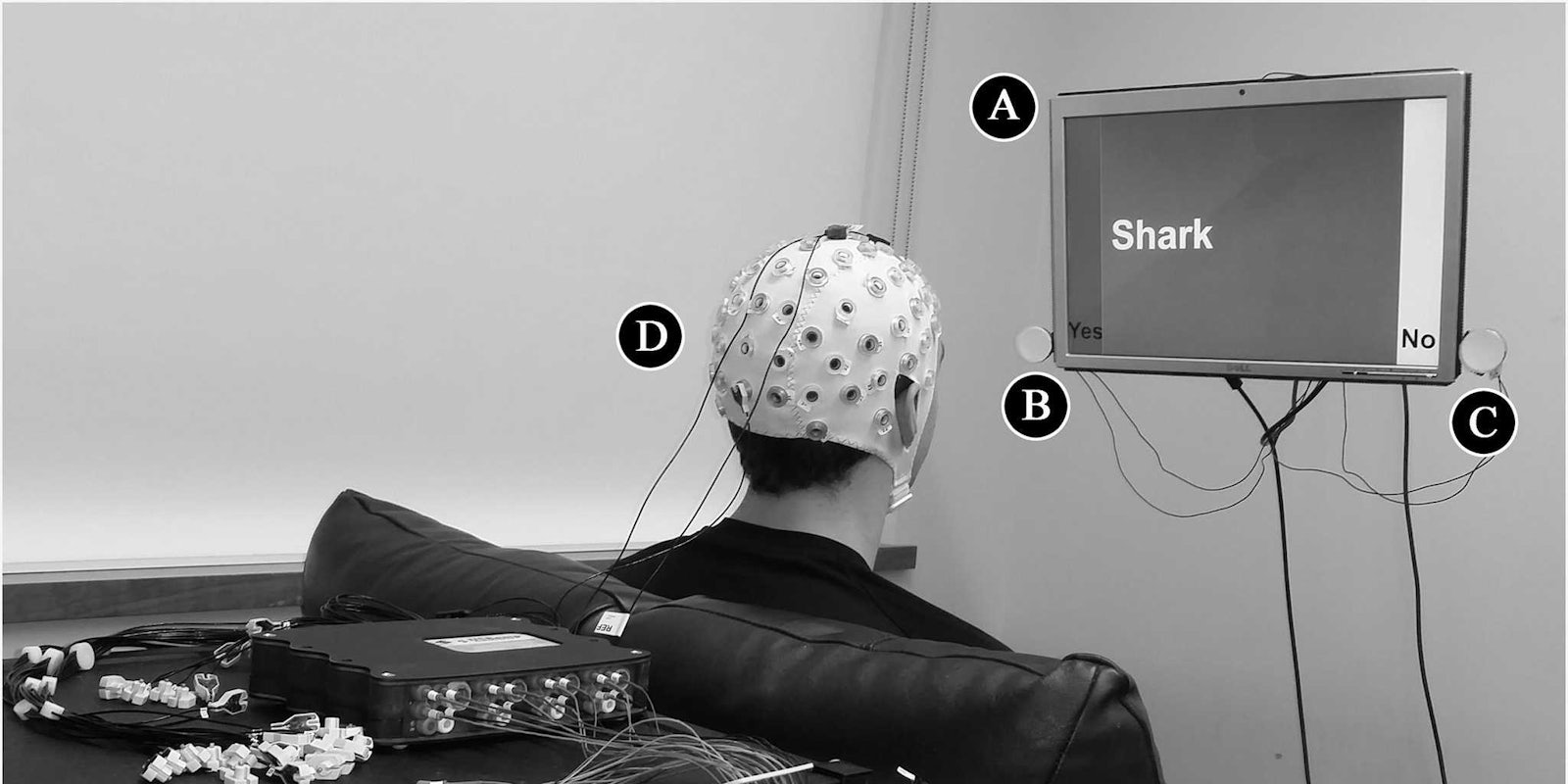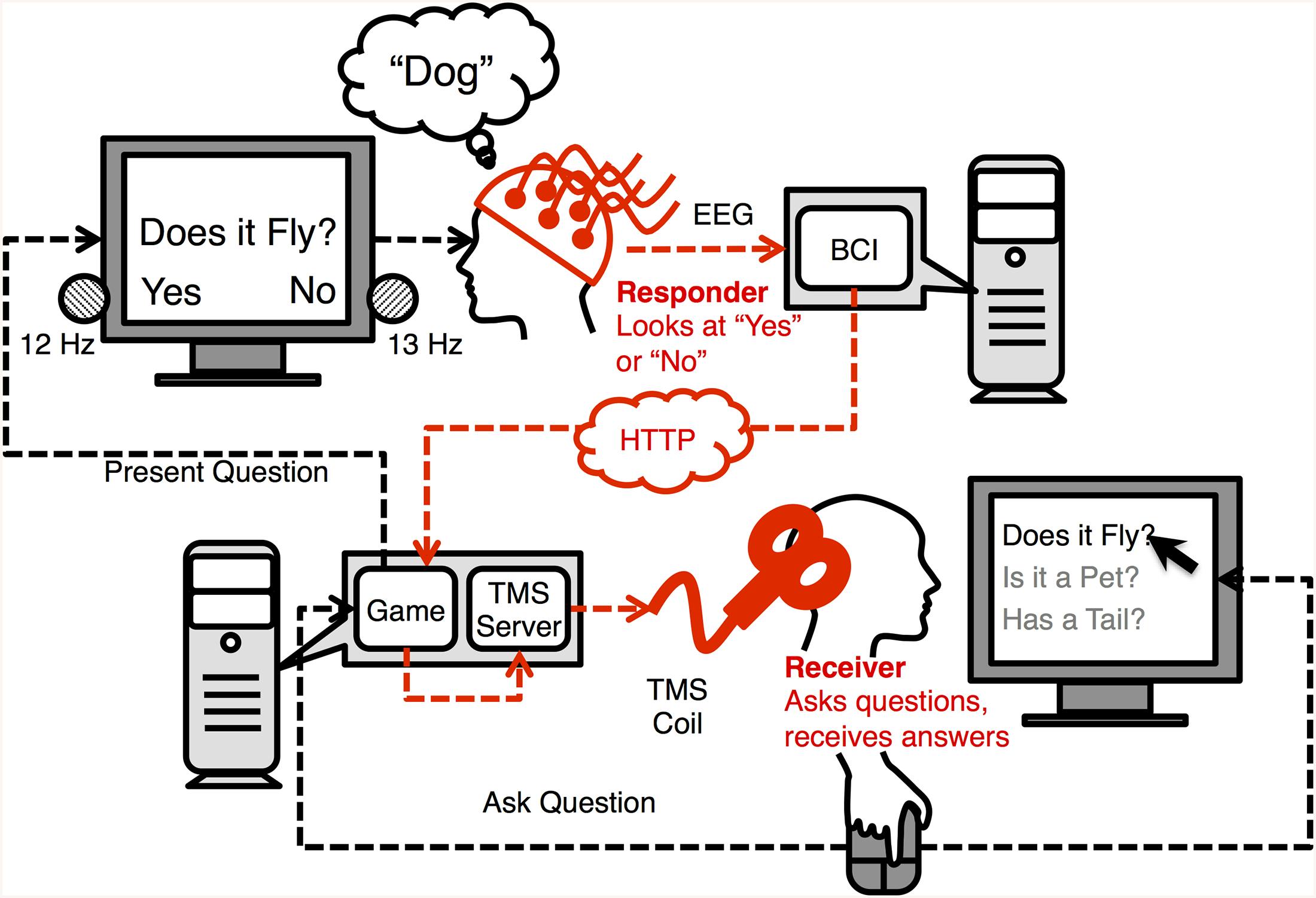Though they were a mile apart, scientists have successfully completed games of “20 Questions” by sending brain waves and a slight beam of light over the Internet.
University of Washington researchers Andrea Stocco and Chantel Prat wanted to use brain interfaces to accomplish a task that’s “collaborative, potentially open-ended, operates in real-time, and requires conscious processing of incoming information,” the two wrote in a paper published in PLOS One. “20 Questions,” a game in which someone must identify a person, place, or thing within asking 20 yes-or-no questions, fit the bill nicely, and three collaborators wrote the software enabling the game to be played by transmitting brain activity data over the Internet.
While brain interfaces are an area of active scientific research, human brain interfaces remain quite basic because, in order to be most effective, it would necessitate direct attachment to the brain. This is not easily accommodated, to say the least.
In this instance, human participants were outfitted with specialized headgear and their own computer displays. The person answering the questions wore an electroencephalography (EEG) machine to measure electrical activity in the brain. The person asking the questions wore a transcranial magnetic stimulation (TMS) device, selecting questions to ask from a computer screen by mouseclick. The other participant would see the question on his or her screen, as well as the words “yes” and “no,” each flashing with its own unique light signature on the sides. Looking at the different answers registers uniquely to the EEG apparatus, and the system is able to identify responses of “yes” and “no” with a human doing nothing more than glancing at the word.
This answer feedback was expressed to the other participant in a novel way. When the answer to a question was “yes,” the TMS device would trigger a phosphene in the the player’s field of vision. Phosphenes are rings of light that are visible only to the wearer of a TMS device, and they were discovered early in the field of transcranial magnetic stimulation. They were used here to help complete the loop from one person’s brain to another, a private way to indicate getting closer to identifying the mystery object.
“Phosphenes are a much better ground for what brain-to-brain communication should be: Conscious and private,” Stocco told the Daily Dot via email.
The experiment was a success: In 72 percent of the games, the participant was able to identify the object in 20 questions or less, compared to just 18 percent in the control group.
The entire “20 Questions”-by-brain setup is represented by this graphic from their paper:
This system’s future is certainly not limited to “20 Questions.” Stocco tells us that the team is working to make it capable of transmitting data more compelling than simple “yes” and “no” responses. “We are working on a lot of concurrent directions now. … We want to transmit more complex and information, something akin to a feeling or a concept. That requires much more work than [’20 Questions’], but could open up much more interesting scenarios than the transmission of simple yes-no answers.”
Brain wave “legibility” varies depending on want you want to read. An EEG can very easily identify different states of the brain—awake, focused, asleep—or the unique signature of flashing lights, as the researchers did in this instance. “Anything more complex than that requires much more work,” Stocco said, though she takes hope in the amount of effort that researchers have historically put into this field.
“In 2010, one researcher at Carnegie Mellon showed that it was possible to decode which of two words a subject was mentally rehearsing,” ” she said. “And that was impressive!
H/T Motherboard | Photo via PLOS ONE



